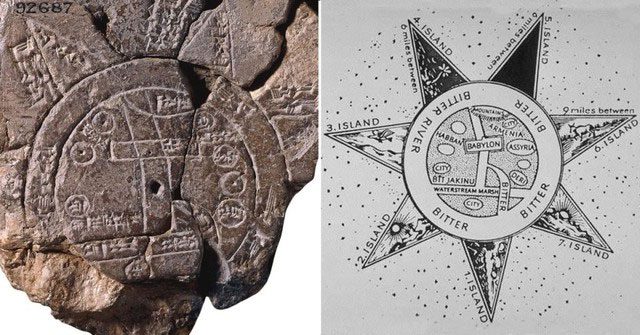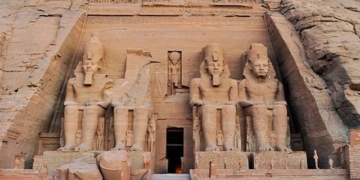Understanding the historical significance and the symbols depicted in the World Map of the Babylonians, the first known world map, can provide us with unparalleled insights into the lives of ancient peoples.
The oldest existing world map is the World Map of the Babylonians, also known as “Imago Mundi”. This clay tablet, dating back to approximately 700-500 BC, depicts the world as a round disk with Babylon at its center. It was discovered by Hormuzd Rassam, a British archaeologist, in 1881 at Sippar, a city near present-day Babylon in Iraq, and is currently housed in the British Museum in London.
Written in the Akkadian language, the World Map of the Babylonians is a fascinating artifact that provides deep insights into the ancient Babylonians’ understanding of the world. It is important to note that the map is not a perfect representation of the world, but it indicates that the Babylonians had a basic understanding of geography.

Imago Mundi, the World Map of the Babylonians, is the earliest known globe. This map was created in the fifth century BC. This map was discovered in the city of Sippar in southern Iraq, illustrating a small portion of the world as known by the ancient Babylonians. This clay tablet was found on the eastern bank of the Euphrates River, north of the ancient city of Babylon.
The map is circular and divided into two concentric circles. The inner circle represents the known world, centered on Babylon, which is depicted as a rectangle near the top. This reflects the Babylonian belief that Babylon was the center of the world.
The Euphrates River flows through the center of the map, running north to south through Babylon. The Euphrates, a major river in Mesopotamia, played a crucial role in the culture and agriculture of the Babylonians. The area to the right of the Euphrates is marked as “marshland” and the left side is labeled “outflow.”
Surrounding the city of Babylon on the map are seven cities and seven islands, encircled by two circles representing the bodies of water that may have been near Babylon at that time. The cuneiform script at the top labels each location; the water features on the map are annotated as “salty sea” and “bitter river.”

This map showcases the Babylonian view of Earth and the sky through the eyes of the Babylonians themselves, placing the city of Babylon at the center of the map. Just as other civilizations did with Athens or Jerusalem, Babylon was positioned centrally because it was the heart of life for thousands of its inhabitants – this was the only perspective they had without modern technologies like satellites, mapping tools, and reliable long-distance transportation. Their viewpoint and ideas about the surrounding world can be seen through this small map, even if it is not entirely complete.
The locations on the map include mountains, marshes, a canal, three unnamed cities, as well as cities like Urartu, Assyria, Der, Elam, Bit Yakin, Habban, Babylon, and an unidentified site. The parallel lines below the city of Babylon are believed to represent the southern marshes of present-day Iraq, while another curve may indicate the Zagros Mountains near the city.
Another notable feature of the map visible in the cuneiform text is that it is actually a copy of an even older map of the region, a map that has been lost to time and memory. The unique perspective of this map, even as a replica of an older creation, not only reveals how the Babylonians viewed their surroundings but also hints at the mythical kingdoms in the heavens.

The islands surrounding Babylon and the known regions around it do not exist in the physical world; they are believed to represent the mythical connection between Earth and the heavens. The back of the tablet describes stars with recognizable constellations corresponding to our modern understanding of the zodiac. The fusion of heaven and earth, the reality of life around them, and the accurate depiction of the universe above them led the Babylonians to create the oldest known map in existence today.
The map was not intended to represent reality or accuracy in geography. Rather, it reflects the worldview and cosmology of the Babylonians, influenced by their religious beliefs and cultural traditions. The map illustrates how the Babylonians viewed themselves as the center of the world and how they imagined the distant and unknown lands beyond their borders. It also depicts their concept of the universe as a flat disk surrounded by water, a common idea in many ancient cultures.
The Babylonian World Map is a unique and valuable artifact that provides us with a glimpse into ancient thought and helps us understand the development of geography and cartography. It also stands as a testament to human curiosity and creativity that has driven us to explore and understand the world throughout history.


















































